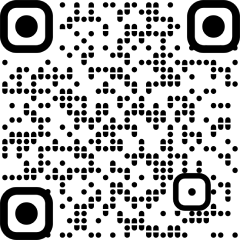By Dr Preeti Goyal
Healthcare system in India is at a crossroads, having to face a number of challenges such as inadequate access, low insurance penetration and a burgeoning burden of chronic diseases. Traditional healthcare models have struggled to demonstrate attractive returns on investment, with only a handful of major providers succeeding. Nevertheless, healthcare is not just about treating illnesses; it holds the potential to drive economic growth, create employment opportunities and safeguard the health and wealth of the nation. In an age where technology permeates every aspect of our lives, it’s astonishing to see healthcare in India lagging behind in the adoption of modern technology. The transition from paper-based records to digital systems is a crucial step for the healthcare industry to improve patient care, streamline operations and stay competitive in the rapidly evolving world of healthtech.
When it comes to healthcare, a significant portion of India’s population remains underserved. The country grapples with a glaring doctor-to-patient ratio of 1:10,189, a figure that falls far short of the World Health Organisation‘s recommended 1:1,000 ratio. To address this disparity and ensure healthcare access for all, India will need to double the number of doctors, recruit three times as many nurses and employ five times more paramedics. Although constructing hospitals and increasing the headcount of healthcare personnels will expand healthcare access, it will not only incur huge capital costs, it is unlikely to generate sufficient returns either. Surprisingly, the cost of setting up a hospital remains relatively consistent across different geographies be it Tier 1 or Tier 3 cities.Nearly 20% of India’s population, or around 200 million people, suffer from chronic ailments, which are a serious burden for the country. With a patient population that is expanding by 13% yearly, diabetes and hypertension alone affect almost 100 million people worldwide. Through remote monitoring, data analytics and patient involvement, technology-driven solutions can be crucial to controlling and avoiding many chronic illnesses. While some healthcare providers have made progress in digitising their operations, many are still heavily reliant on paper-based records and outdated systems. This reliance on paper charts, handwritten notes and physical files not only increases the risk of errors but also hinders the efficient exchange of information among healthcare professionals. In an era where information can be accessed at the click of a button, healthcare’s paper-based approach seems archaic. Moreover, in contrast to Western healthcare ecosystems, India’s healthcare system is still largely consumer-led. Patients often carry their medical records when visiting hospitals and insurance penetration remains low at 15%. Outpatient insurance is virtually non-existent, placing the financial burden squarely on the shoulders of individual patients. This motivates individuals to seek cost-effective ways to reduce their disease-related expenses.The incorporation of technology in healthcare raises some optimism for overcoming such difficulties. It could transform the conventional “sick care” approach into one that emphasises wellness and prevention. India can close the disparity between people and healthcare professionals by using technology and providing solutions that are both easily available and reasonably priced. Healthcare in India needs to increasingly be mobile-focused, moving from hospitals to clinics, clinics to homes and eventually to a universal 24/7 access. This trend is already being driven by mobile technology, which gives people access to healthcare services with never-before-seen ease. As more and more regions are penetrated by the internet and smartphone expansion, more and more people will start using their cell phones to track their health, communicate with healthcare professionals remotely and get instant access to healthcare information.
The transformation of healthcare from paper to pixels is not just a matter of convenience; it’s a necessity for improving patient care, increasing efficiency and staying competitive in the ever-shifting technology and healthcare markets. Electronic Health Records, telemedicine and other modern technologies have the potential to revolutionise healthcare by enhancing accessibility, reducing costs and enabling data-driven decision-making. As healthcare continues to catch up with modern technology, patients can look forward to a future of more accessible, efficient and effective healthcare services without governments having to bear a lot of financial brunt. It’s time for India to harness the power of technology to bridge the gaps in its healthcare system and ensure the well-being of its people while fostering economic growth.
Dr Preeti Goyal, Vice President, Medical Services, MediBuddy vHealth.
(DISCLAIMER: The views expressed are solely of the author and ETHealthworld.com does not necessarily subscribe to it. ETHealthworld.com shall not be responsible for any damage caused to any person/organisation directly or indirectly).


